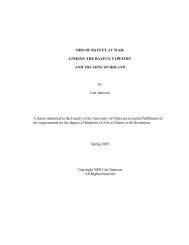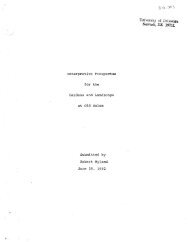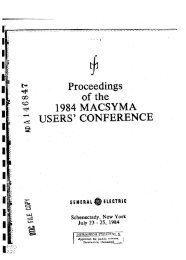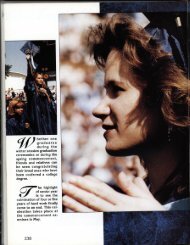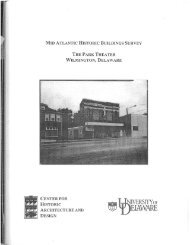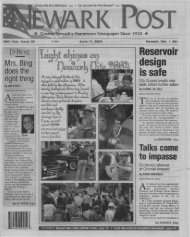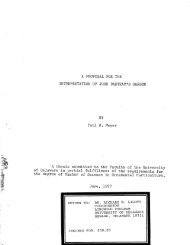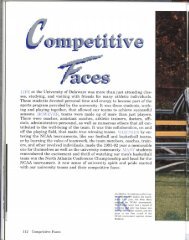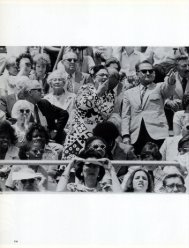FTELD TRIP ACROSS THE APPALACHTAN OROGENIC BELT
FTELD TRIP ACROSS THE APPALACHTAN OROGENIC BELT
FTELD TRIP ACROSS THE APPALACHTAN OROGENIC BELT
You also want an ePaper? Increase the reach of your titles
YUMPU automatically turns print PDFs into web optimized ePapers that Google loves.
sToP 12:<br />
23<br />
EXCELSIOR<br />
The rocks in this outcrop belong to the LLEIIEI,LYI{ FORI{ATfOil,<br />
of niddle Pennsylvanian age (see Figure 4). The highway here is<br />
nestled up against a ridge of Pottsville Fornation sandstone and<br />
conglomerate to the south, and the rocks here are probably near<br />
the base of the overlying Llewellyn. The rocks are of niddle<br />
Pennsylvanian a9€, and can be precisely correlated on the basis of<br />
abundant plant fossils with rocks in western Pennsylvania and<br />
Ohio. The Llewellyn is structurally beat up, and these units here<br />
probably do not carry across the valley without folding and<br />
faulting<br />
The rocks of the Llewellyn consist of interbedded sandstones,<br />
siltstone-shales, black rocks (resembling organic-rich shales),<br />
and anthracite coal. The generally dingy, dark color of the<br />
rocks is due to fine-grained plant remains, which have been<br />
distilled (preservation by distillation) to the carbon residue you<br />
see. The sandstones have not been washed and sorted, and all the<br />
rocks are immature.<br />
The most interesting aspect of this outcrop is the manner in<br />
which the lithologies are related to each other. A sketch map is<br />
provided to help you in tracing units through the outcrop (next<br />
page). The rock units are vertically interbedded in several<br />
different ways. The focus of interbedding is on the contacts<br />
between lithologic unitst pay attention to whether they are<br />
erosional. qcoured surfacesr or gradational over some distance.<br />
There are several undoubted erosion surfaces in the outcrop; units<br />
are of quite irregular thickness, and often fill depressions in<br />
the tops of underlying beds. Several other contacts appear<br />
gradational, but when you look closely they may in fact be<br />
erosional.<br />
The rocks appear to eontain well-developed primary structures.<br />
The lowest sandstone is cross-bedded, €ls is the sandstone at nidcrop<br />
level. Channeling is developed in several units. Look at<br />
the rocks more closely, on a small sca1e, and you will probably<br />
find many more primary structures.<br />
one feature contributing to non-repeating lithologies here is<br />
the lateral non-persistence of rock units. Lithologic units<br />
change shape along the outcrop, and some almost die out entirely.<br />
The black, rralmostrr-coal bed thins, over a trhighn near the center<br />
of the cut, and thickens to either side. The bed immediately<br />
below the almost coal nearly disappears to the west, below a<br />
probable erosion surface. The channel sand at the east end, if it<br />
is in fact a channel sand, is lens-shaped. The resutting picture<br />
one gets is of a depositional environment with ultra-rapid lateral<br />
facies changes, bedrock istands of trhighsn in low-lying areas,<br />
probably slramps, which were flanked by encroaching forests and<br />
other organic growths. sirnilar conditions are identifiable in the



